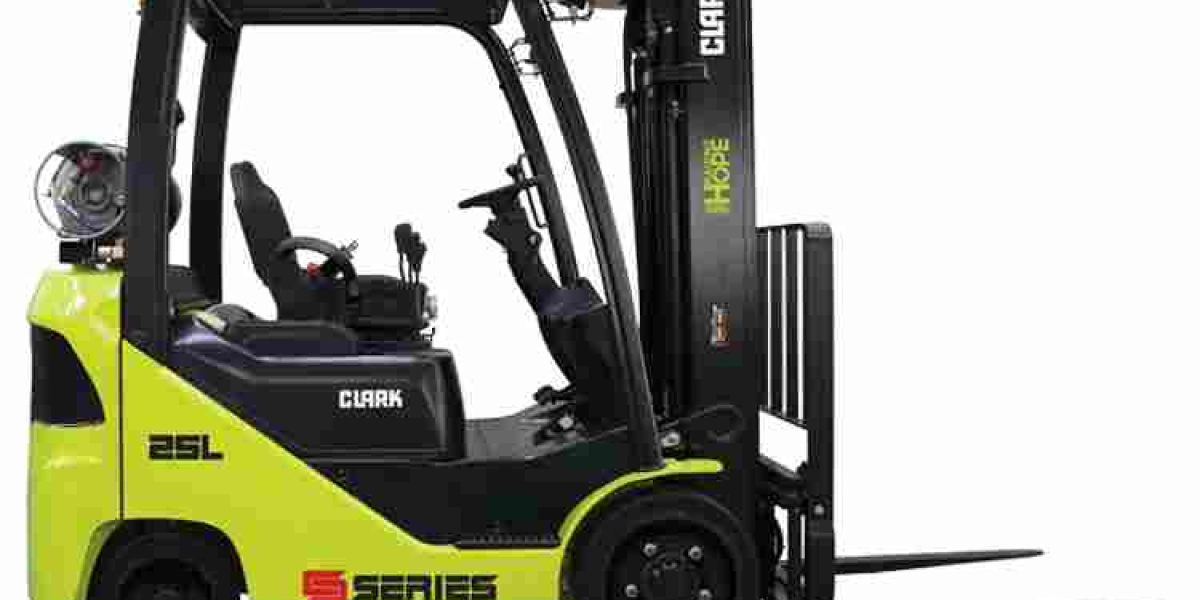In any warehouse, construction site, or logistics operation, forklifts are the unsung heroes. They lift, move, and organize heavy loads, keeping operations running smoothly. However, like any complex machine, forklifts need regular service and maintenance to perform at their best. Without it, even a minor issue can lead to breakdowns, accidents, and costly downtime.
Professional forklift service is not just about fixing problems — it’s about preventing them. Businesses that prioritize preventive maintenance enjoy safer workplaces, higher productivity, and longer-lasting equipment.
Why Regular Forklift Service Matters
Forklifts operate under heavy stress daily. Engines, hydraulic systems, brakes, tires, and electrical components face constant wear and tear. If neglected, this wear can lead to:
Sudden breakdowns disrupting workflow
Increased repair costs
Safety hazards for operators and coworkers
Reduced operational efficiency
A well-maintained forklift, however, is reliable, efficient, and safe, allowing businesses to focus on growth instead of repairs.
What’s Included in a Comprehensive Forklift Service
Professional forklift service is a detailed process designed to maintain safety, efficiency, and compliance. Key components include:
1. Visual Inspection
Technicians begin with a thorough visual check for leaks, cracks, and worn components. They inspect tires, chains, masts, and overall structural integrity.
2. Engine and Battery Maintenance
Internal combustion forklifts: Oil changes, fuel filter replacement, and engine diagnostics.
Electric forklifts: Battery testing, voltage checks, terminal cleaning, and charging efficiency checks.
3. Hydraulic System Check
Hydraulics control lifting and tilting. Technicians inspect hoses, cylinders, seals, and fluid quality to ensure smooth operation.
4. Brakes, Steering, and Tires
Brake pads, lines, and steering mechanisms are tested and adjusted. Tires are checked for wear, cracks, and proper pressure.
5. Electrical Systems
Lights, alarms, horns, and safety sensors are inspected to confirm proper operation. Any faulty wiring or components are repaired or replaced.
6. Lubrication and Final Testing
All moving parts are lubricated, fluids topped up, and the forklift is tested under operational conditions to ensure optimal performance.
After service, businesses receive a detailed report that outlines all checks, repairs, and recommendations for future maintenance.
Preventive Forklift Maintenance: A Proactive Approach
There are two main approaches to maintenance: reactive and preventive.
Reactive maintenance occurs after a breakdown, leading to downtime, lost productivity, and higher repair costs.
Preventive maintenance schedules regular inspections and servicing to catch small issues before they escalate.
Preventive forklift service ensures:
Fewer unexpected breakdowns
Extended equipment lifespan
Compliance with safety regulations
Reduced long-term costs
Consistent productivity
For most forklifts, preventive maintenance every 250 operating hours or at least quarterly keeps machines in optimal condition.
Warning Signs Your Forklift Needs Service
Operators should watch for early warning signs, even if regular maintenance is scheduled:
Slow or uneven lifting and tilting
Unusual noises or vibrations
Leaks in hydraulic fluid or oil
Warning lights on the dashboard
Difficulty steering or braking
Excessive tire wear
Addressing these signs promptly prevents major repairs and ensures operator safety.
How Often Should Forklifts Be Serviced?
Frequency depends on forklift usage, environment, and type:
Light usage: Every 6 months
Moderate usage: Every 3–4 months
Heavy-duty usage: Monthly or every 250 operating hours
Forklifts operating outdoors or in dusty, wet, or extreme environments may require more frequent inspections. Adhering to the recommended service schedule ensures reliability and safety.
Choosing the Right Forklift Service Provider
A professional forklift service provider is a key partner for any business. When selecting one, consider:
Certified Technicians – Experts trained on multiple forklift brands and models.
Use of Genuine Parts – OEM parts ensure longer life and performance.
Flexible Service Plans – Options for preventive, emergency, and full-service maintenance.
On-Site or Fast Response Service – Minimizes downtime.
Detailed Service Reports – Helps track maintenance history and compliance.
A trusted provider ensures forklifts remain safe, reliable, and efficient at all times.
Safety Benefits of Forklift Service
Forklift accidents are often caused by mechanical failure. Regular maintenance reduces these risks:
Brakes and steering remain responsive
Hydraulic systems are leak-free and stable
Electrical systems operate correctly
Tires and load-handling components remain safe
A well-serviced forklift not only protects employees but also avoids legal or regulatory penalties.
Modern Trends in Forklift Maintenance
Technology is changing forklift maintenance. Smart forklifts now feature sensors and telematics to monitor battery levels, engine performance, and maintenance needs in real time.
Benefits include:
Predictive maintenance alerts
Reduced downtime and emergency repairs
Improved safety compliance
Better efficiency and cost management
Companies embracing these innovations enjoy higher uptime and more reliable operations.
Cost vs. Value of Regular Forklift Service
Many businesses hesitate to invest in maintenance, but it is actually a cost-saving strategy. Benefits include:
Reduced emergency repair costs
Increased equipment lifespan
Minimization of downtime
Lower energy and fuel consumption
Compliance with safety regulations
Well-maintained forklifts can operate up to 40% longer, making preventive service a highly valuable investment.
Best Practices for Forklift Maintenance
To maximize the benefits of service:
Maintain a detailed service log for each forklift.
Train operators to identify early warning signs.
Use manufacturer-recommended lubricants and fluids.
Follow a consistent preventive maintenance schedule.
Partner with a reliable service provider for emergency support.
Implementing these practices ensures safety, reliability, and peak performance.
Conclusion
Forklifts are essential for material handling operations, but their efficiency depends on proper care. Regular forklift service keeps equipment safe, reliable, and productive.
Investing in preventive maintenance ensures:
✅ Fewer breakdowns and downtime
✅ Enhanced operator safety
✅ Reduced long-term costs
✅ Longer equipment lifespan
In today’s competitive industrial environment, forklift service isn’t optional — it’s a necessity. Keep your operations running smoothly, protect your team, and maximize your investment with professional forklift maintenance today.

















